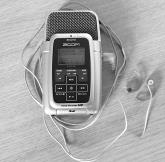
|
The Binaural Project |
|
This is the startpage for the Binaural Project site. The Binaural Project was launched in 2011, with the aim to gain more insight in the relationship between perceptual aspects in concert listeners and features in the binaural signal. A basic activity has been to acquire binaural data for the analysis, in particular to collect binaural recordings form concerts with symphony orchestras in big halls. So far, the Binaural Project has concentrated on spatial listener aspects. However, all hearing aspects relevant to music performance or speech, listener aspect as well as musicians’ hearing aspects, are in the general scope of the project.
INTRODUCTION There is a common understanding among acousticians1 that a symphony orchestra can produce a broad sound image in one concert hall and a narrow or frontal sound image in another concert hall, even if playing the same piece. This perceptive effect is referred to as Apparent Source Width (ASW), or Source Broadening. A similar common understanding goes for perceived Listener Envelopment (LEV): One concert hall offers the sensation that musician and listener is in the same space, enveloped by the same physical environment, while another hall fails to do so. A concert hall’s ability to add source broadening and envelopment to the listening experience during a music performance, can be measured by analysing room impulse responses, according to ISO-33822. Early lateral fraction (LF) and early inter-aural cross-correlation (IACCE) are indicators for source broadening, while late lateral strength (LLG) is an indicator for listener envelopment. Beranek (2008)3 suggested that listener envelopment can be predicted from a combination of late strength (Glate) and late inter-aural cross-correlation (IACCL). More recently4, Skalevik has investigated the time-varying inter-aural cross-correlation, IACC(t), in binaural recordings during symphony orchestra performances in concert halls, including several well-known halls. The objective is to see whether spatial listener aspects correspond to any features in IACC(t). One would like to know how big the hall-to-hall differences are compared to the variation due to music content. Another interesting question arisen during the Binaural Project is whether or not source broadening and source localization are mutually exclusive. HALLS As of April 2017, a total of 10 hours of binaural signal have been aquired, from a total of 10 big concert halls (in addition to data from smaller halls):
TERMS AND DEFINITIONS Some relevant terms and definitions are presented in Table 1. Table 1 Terms and definitions
...to be continued….
References 1. Marshall, A.H., Barron, M., "Spatial responsiveness in concert halls and the origins of spatial impression", App. Acoustics, 2000;62(2):91-108. 2. International Standard, “ISO-3382 Acoustics – Measurement of Room Acoustic Parameters – Part 1, Performance Spaces”, 1st edition (2009) 3. Beranek, L., Concert Hall Acoustics 2008, J. Audio Eng. Soc., Vol. 56, No. 7/8, 2008, Concert Hall Acoustics 2008 (source 1) ( source2 download in new window) 4. Skålevik, M., Can source broadening and listener envelopment be measured directly from a music performance in a concert hall? Proc. Inst. of Ac. (IOA), Vol. 37. Pt.3 2015, paper 34 https://www.akutek.info/Papers/MS_Spaciousness-meter.pdf 5. https://www.akutek.info/demo_files/binaural_hearing.htm 6. https://www.akutek.info/demo_files/binaural_localization.htm 7. https://www.akutek.info/demo_files/spatial_impression.htm 8. https://www.akutek.info/demo_files/binaural_localization_cues.htm 9. About binaural hearing models, the Jeffress model, see below
|
|
Page created 05.04.2017 Latest change 31.10.2023 |
|
Binaural Project sub-pages |
Binaural Project links |
|
Measurements of IACC during music performance in concert halls 01.02.2017 |
|
|
ISMRA presentation 11.09.2016, ASA-Boston-2017-presentation 29.06.2017 |
|
|
Two Ears 31.10.2023, an update an extension of the paper presented to IOA Auditorium Acoustics, Athen 2023 |






